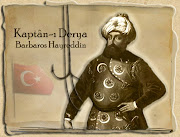This palace was built in 1790/1791 by Hassan Bacha El Khaznadji (Pasha Hassan the Treasurer) who was the Minister of Finances of Alger's Dey Mohammed Ben Othman (1766 till 1791). As testimony of past, this Moresque palace still keeps the name of the Pasha Hassan. It is situated in front of Dar Aziza and adjoins the Mosque Ketchaoua. It is necessary to note that at that time the Minister Hassan Bacha to make sure the nearness of his daughter Khdawedj had acquired the Palace of Princesses Khdaouedj, a famous monument we will describe here later.
Well preserved thanks to long lasting restorations, this palace does not however look like it is original look ; mainly because of the major modifications brought to its facade when it was of used as Winter palace to the French governor of Algiers between 1839-1841. Hotel of famous hosts, the place keeps the spirit of the passage of NAPOLÉON III (on 1860 and 1865) as well as that of the President Emile LOUBET (1903).
This monument of the algéroise memory notably sheltered the Ministry of the religious Affairs in the 1990s.
A beautiful description of the internal arrangement made in the daily newpaper el watan indicates that the ancient door is situated in the street street Sheik El Qanaïde Soudan (eg street of Sudan). The door is still decorated with a stony frame of ogivales windows and a gate with marble columns chatters were fitted out there. The luxurious residence consists of three levels heightened by a menzah (a terrace). The vast central patio is overhung by a window allowing the beautiful light of Algiers to blackmail the building.
Walls are still covered with patches of delft. Other stone floors are of Italian origin. The second accessible level by a staircase is surrounded with a balustrade in openwork woodwork. The superior floor which shelters a big glazed room was reserved for the dey. The Dey welcomed his distinctive hosts there. Walls are decorated with an enamel of Delft, Italy and Tunisia of the XVIth century; what lets think that the elements of decorations would have been used originally in other palaces. The Diwan ( advice(council) was held in the palace of Djenina, a element of the city which today disappeared.
The palace was classified historical on 01/02/1982 (J.O.n ° 10 of 14/03/1982)
Saturday, October 25, 2008
Subscribe to:
Posts (Atom)





